Tour packages are a useful way to win new bookings and extra business from customers — and most business owners find that offering tour packages can be an effective way to drive growth.
Tour packages are also convenient for customers because they simplify travel planning (especially in new places where customers don’t know the best experiences to book). Travellers can look for packages that fill their schedules or cover other parts of planning, like booking hotels or transportation.
We’ve been working with tour operators for 10+ years, helping them grow their business through partnerships, online travel agencies (OTAs), and other marketing strategies. So our team created this guide with tips to create tour packages that entice travellers and earn you business.
Our tour operator software, Bókun, offers user-friendly, modern tools to create detailed tour packages, partner with other businesses in the tourism industry, and make managing all of your bookings simple and easy. If you’re interested in exploring our solution, keep reading or start a free 14-day trial.
A brief demo video
We also put together a brief two-minute demo video on this topic:
Note: A tour package can include any combination of tours or services.
Some advice on this topic discusses tour packages as bundles including tours, lodging, transportation, dining, etc. While tour operators may require all of this to offer multi-day packages (travel packages or vacation packages), it’s not necessary for every tour package. In other words, you can still leverage this strategy even if you don’t have each aspect of travel planned for customers.
Choosing the types of tour packages to offer
Think about the types of tour packages you want to offer. You can’t just select any handful of experiences and call it a package — there should be some logic.
We suggest gathering ideas by:
- Researching tour packages to see what others provide and what’s popular to do in your area. Check OTAs (like Viator, GetYourGuide, Expedia, Tiqets, Booking.com), Google, and competitors’ websites. Also pay attention to what’s trending on those sites.
- Considering different target audiences — families with kids, solo travellers, couples or honeymooners, seniors or retirees, bachelor or bachelorette groups, and more.
- Thinking about the types of packages you’re able (or hoping) to provide. Evaluate your product line and unique selling points, and think about how you can create tour packages from existing offerings. You could also look at past customer reviews or social media/email enquiries and see if customers have suggested or requested packages. If you’re looking to provide more comprehensive travel packages, think about ways to source partners and collaborate. (More on this below.)
For example, you could offer…
- A Sights of Rome package, including tours of the Colosseum, Pantheon, Sistine Chapel, and other noteworthy attractions.
- A Switzerland with Kids family-centric, multi-day travel experience, with tours of must-see attractions, dining at popular kid-friendly restaurants, and the customers’ hotel stay.
- A Newlywed Getaway through Italy, with catamaran charters, wine tours, and a resort stay.
Let’s say we’re a tour operator based in Dubai and we want to learn about the different types of tour packages competitors offer. We could start with a basic search of “Dubai tour packages” on Viator to see the most popular options:
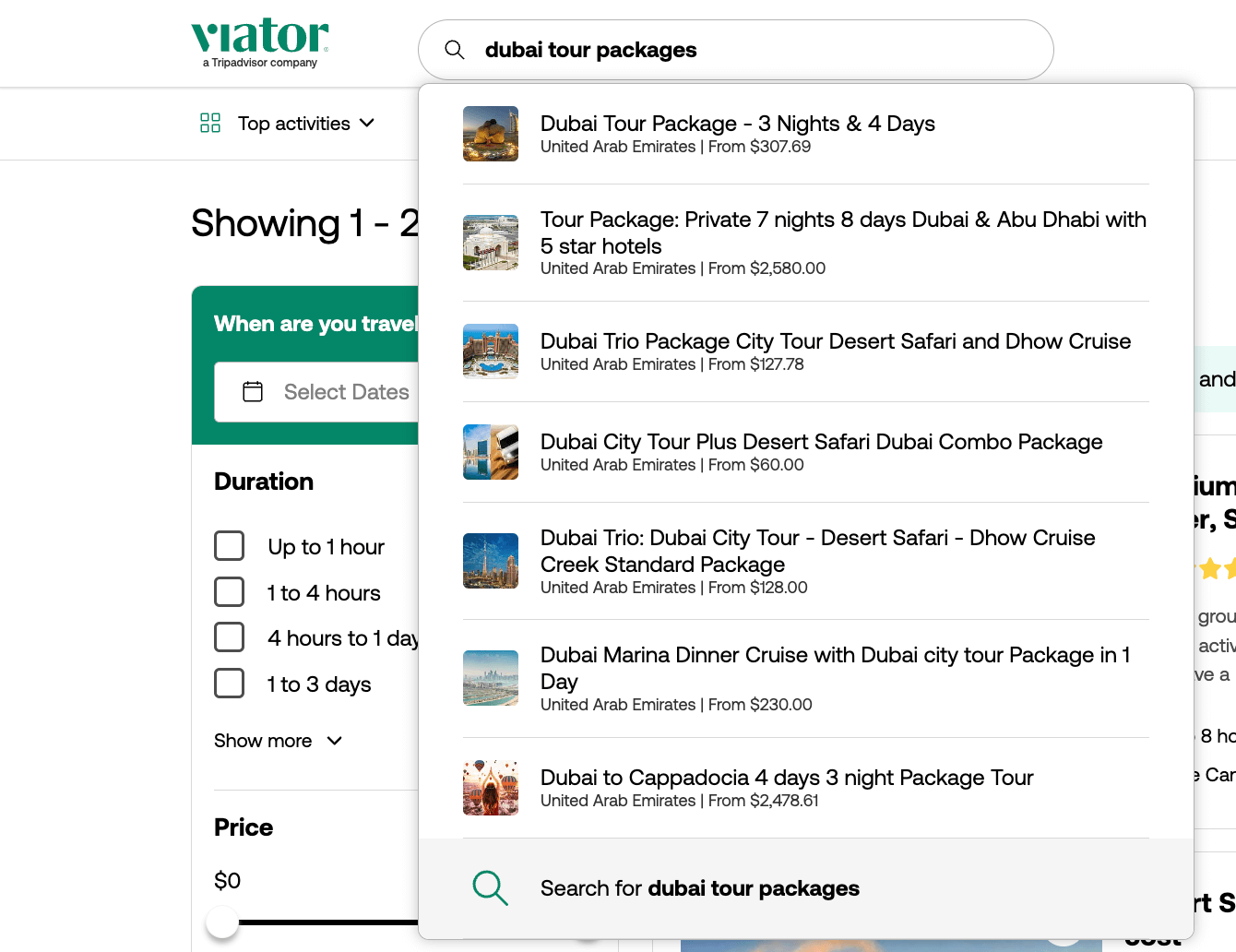
Then, we can view the list of results and use Viator’s filtering options to find tours based on pricing, reviews, or other requirements.
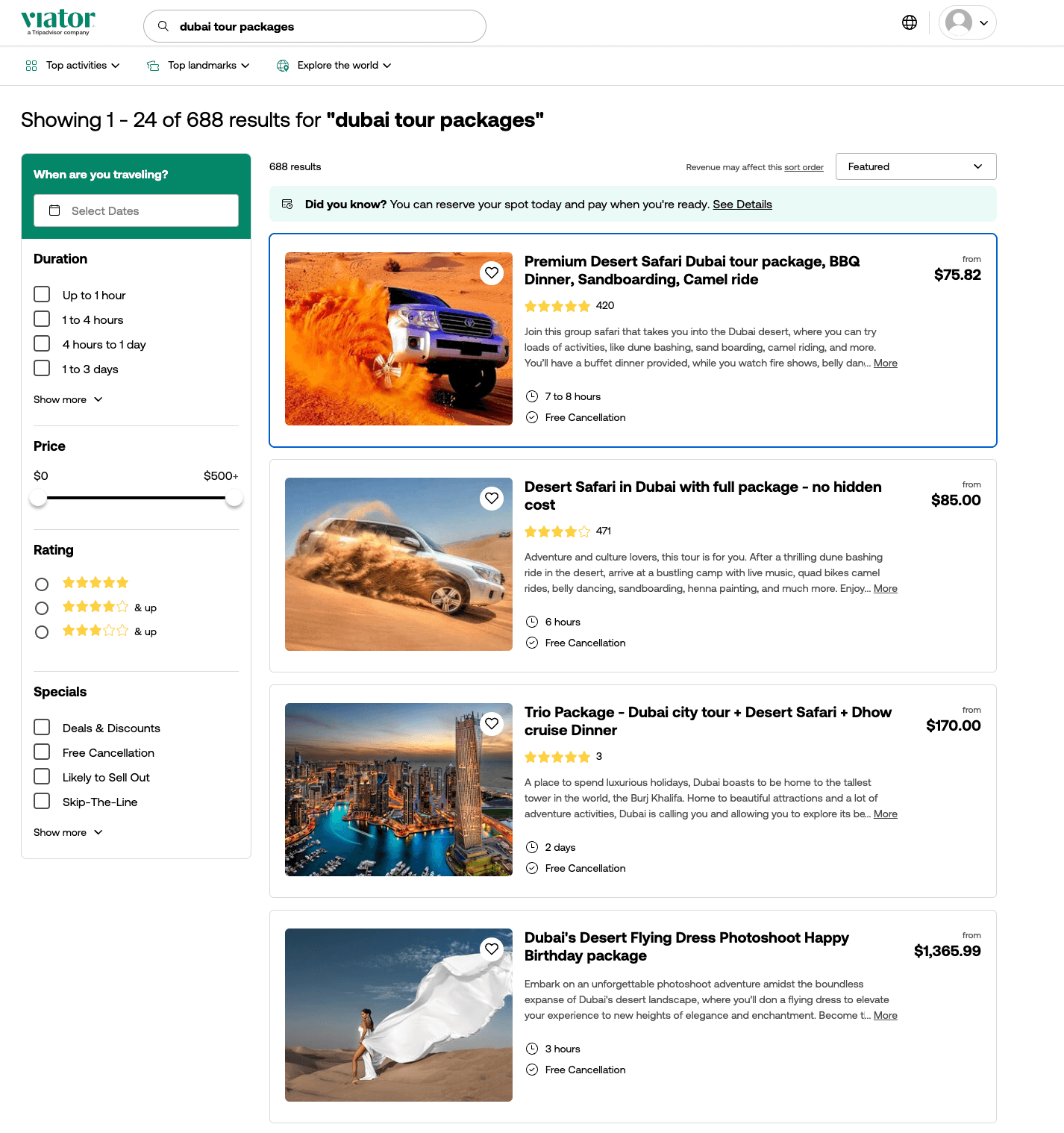
Alternatively, we could check Google with a simple search of “tour packages in Dubai” to see what others would see when doing this research.
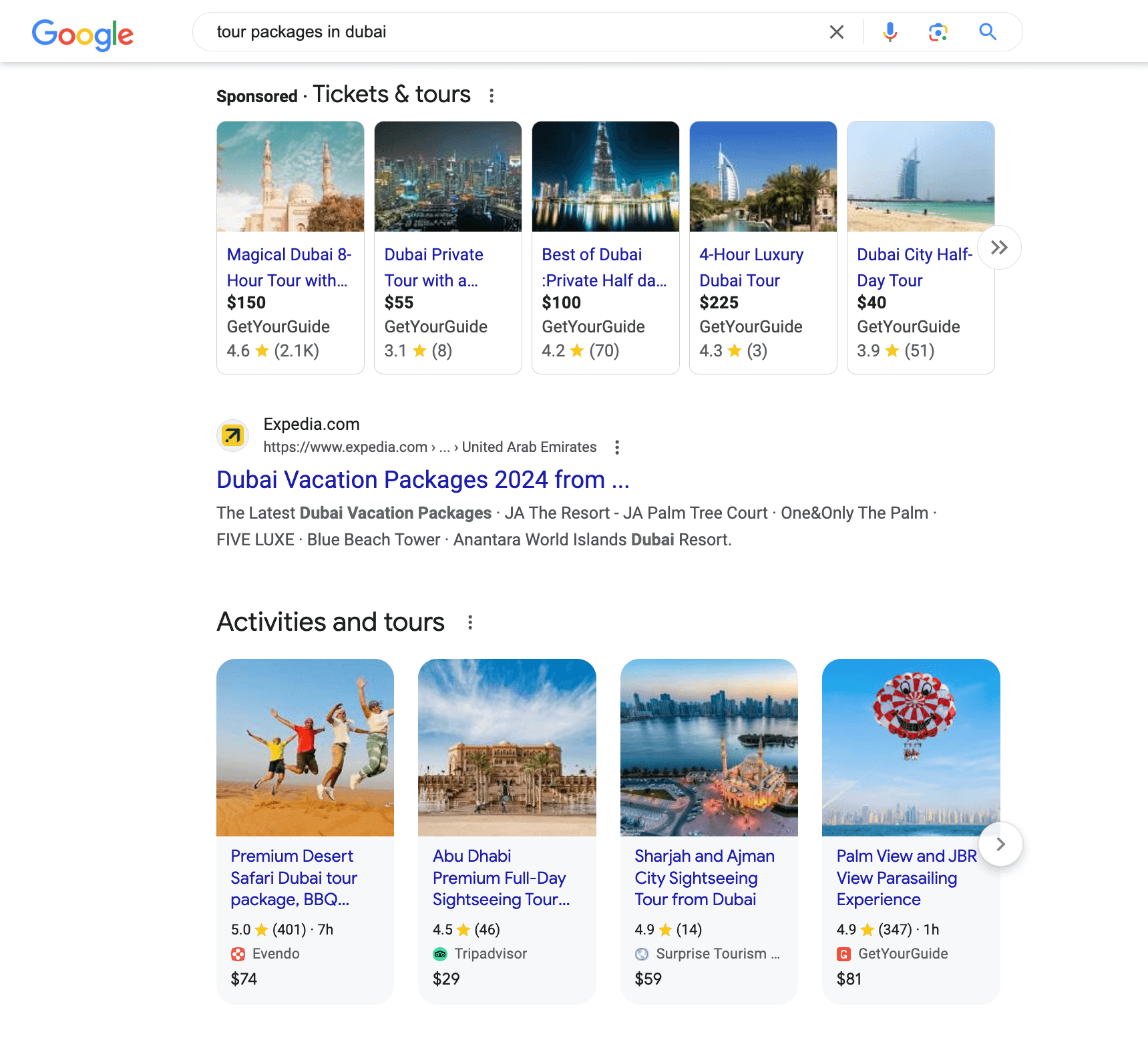
Notice that most tour operators offer single-day experiences with a combination of tours and activities. We only see a few overnight or multi-day experiences. So again, you don’t need the “entire package” to offer tour packages.
This research gives you a foundation for the audiences you want to attract, which products and services to include in tour packages, and how to start building these packages (e.g., whether you need to source partners or have resources to create listings).
Sourcing partners to create tour packages
Working with partners is highly beneficial when creating tour packages because it allows you to offer more (diversity, convenience) to potential customers.
You can offer different types of tours — for example, provide experiences you normally couldn’t or visit places you don’t typically have access to — and create those multi-day, hassle-free travel packages with full accommodations for customers.
The best way to source these partners is through your booking software.
Note: If you’re not already using a booking system to sell tours online and manage reservations from OTAs, you should consider this upgrade to create and sell tour packages effectively. Otherwise, you’ll have trouble sourcing partners, managing reservations from partners, attributing bookings and commissions, listing travel packages on websites, and more.
You can learn more about these solutions here: Top-rated activity booking software

Our tour operator software, Bókun, offers a partner network (called Marketplace) with over 27K businesses in the tourism and travel industry. These include resorts, hostels, hotel chains, attractions, rental providers, other tour operators, and activity-based businesses.
Virtually every client can find partners offering complementary services and experiences in our network.
There are a few ways to use our Marketplace — first (and most obviously) you can connect with partners to offer tour packages.
You could partner with other tour providers, such as a boat charter or a food tour company, and package your tours into an all-day experience for customers. Alternatively, you could partner with a hotel or resort to offer a package with both tours and lodging. You could also partner with travel agents and collaborate on creating and marketing tour packages.
In addition, you can function as a supplier (where others sell your tours for a commission) or reseller (where you resell others’ experiences or services for a commission).
Our system has all of the necessary features to research partners, make connections, and manage contracts; you can communicate within the system to decide on package details, create and send contracts, and reference all communications and documents. You can work with an unlimited number of partners and modify these contracts any time.
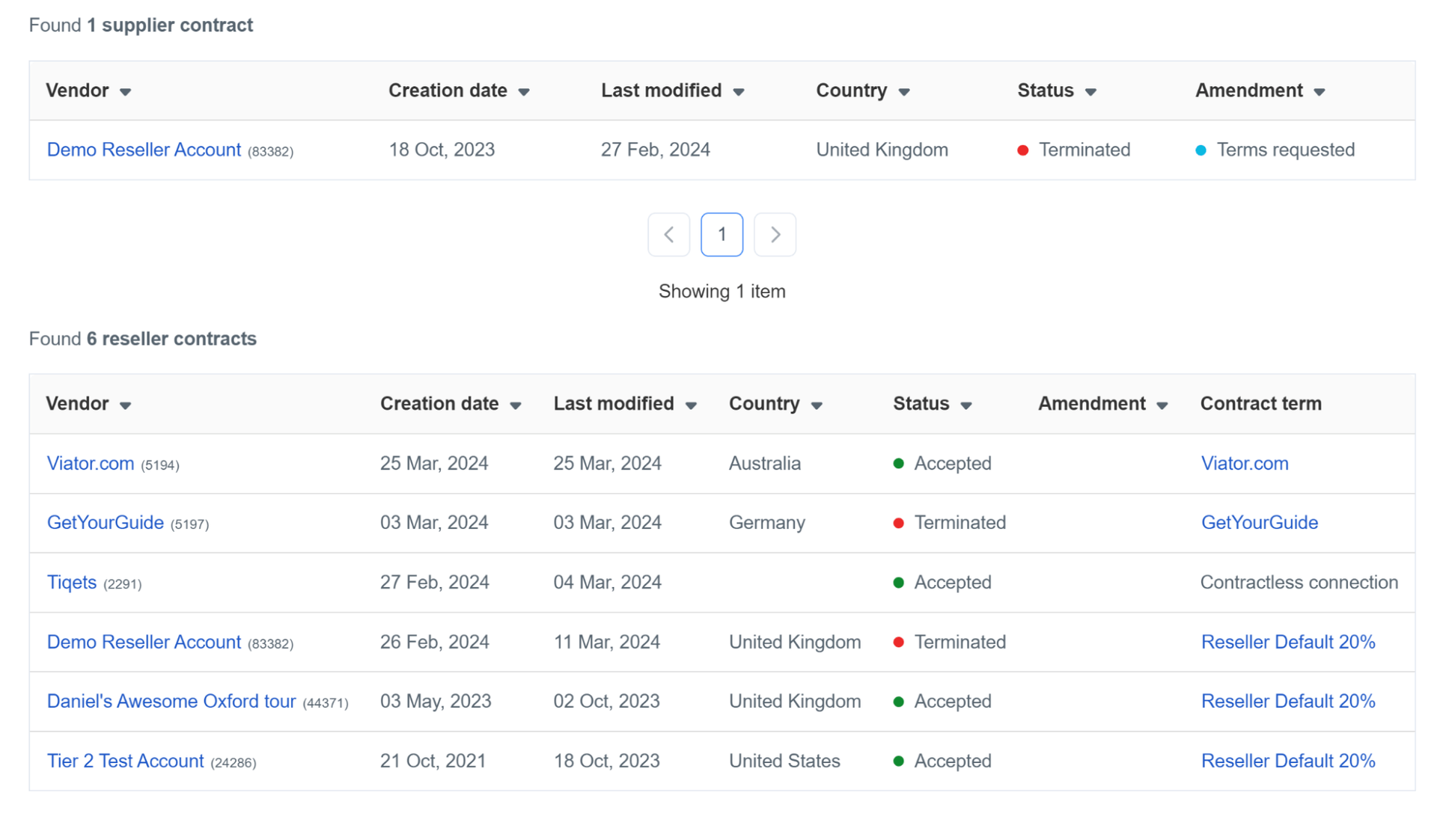
At the time of writing, our system holds over 150,000 contracts between suppliers and resellers.
On average, $1M worth of bookings flow through our Marketplace every day.
Read more: Discover partnership opportunities in the marketplace
What to include in tour package listings
You can create tour packages on your booking website or OTAs like Viator to promote these experiences in front of new customers and receive reservations.
Here’s what customers look for in these listings:
- What experiences or services are included (and if there are options to customise the experience or purchase add-ons).
- Detailed itineraries for each experience and important notes about where visitors will be staying or transportation.
- Pricing — overall, and by service; some travellers buy packages because they can receive discounts for booking bundles, so it’s good to show list prices with the discounted rates.
- Duration (if it’s a single or multi-day experience).
- Typical age range for guests (or which audience the package is tailored to — couples, families, etc.).
- Minimum and maximum capacities for packages.
- Cancellation policies.
- The ability to instantly check availability, purchase, and edit bookings.
You should give packages attention-grabbing and catchy but clear titles. They should give customers some “preview” of what your package provides.
But watch title length; you don’t want super-long titles that are a mouthful or hard to follow. You should also avoid unnecessary special characters (like asterisks, or $ or ~) that look “spammy.”
For example, let’s click into the Premium Desert Safari Dubai tour package that we saw on Viator earlier:

We can instantly see reviews and star ratings, pictures from past tours, availability, payment and cancellation policies, duration, pick-up information, pricing, and more.
Then, we can scroll below to see all the “fine print” and read more about the experience.
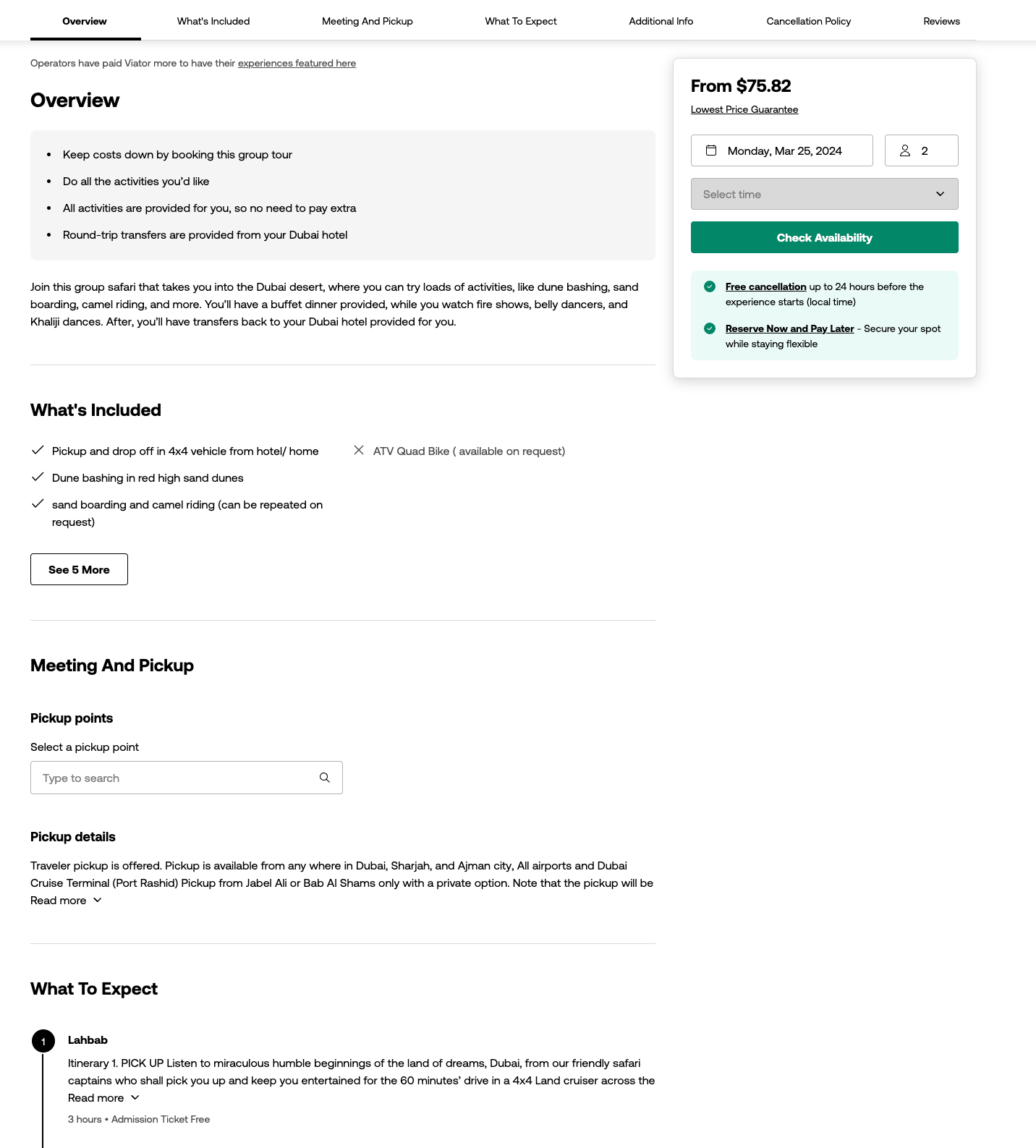
We have all the information we need to decide if we want to book; we don’t have to contact the tour operator to ask about payments or cancellations or to request and confirm bookings.
Viator’s site supports the entire process so customers can make these bookings at their leisure (and tour operators can earn new business 24/7).
Pro tip: Adding details to listings and acquiring reviews can help you earn Viator’s Badge of Excellence; this means Viator is more likely to recommend you when people search for tours and activities, so you appear more often and (potentially) earn more business from this channel.
This isn’t specific to Viator; many OTAs filter results by reviews and star ratings to recommend the best activities for travellers.
On that note — we also advise double-checking tour itineraries to ensure they’re engaging and include ample detail.
Our system walks you through what to include in listings, but as a general rule of thumb, we suggest adding:
- A thorough description of the tour or activity.
- High-quality photos or videos from past experiences; listings should include at least six images. Use a variety of shots and media to showcase your experiences.
- Addresses and locations of experiences.
- Details about transportation to and from tours, including pick-up or drop-off points and check-in locations.
- Notes on how to prepare for the experience and what to bring — any equipment, bathing suits, sunscreen or hats, shoe type (water, hiking, climbing), protective covers for phones, etc.
- Notable inclusions/exclusions.

In summary:
- Start by designing detailed listings for each tour or experience in your package.
- Bundle those products and services and create a description for your package with all of the information listed above.
This way, readers can get a bird’s-eye-view of your tour package, what’s included, and learn more about each experience.
Best practices for creating tour packages
First, don’t forget about timing.
You want to avoid overlap between experiences and give customers time between tours (for breaks or to travel to the next destination).
For example, three experiences right after another could be overwhelming for customers, but you could package two morning experiences to fill customers’ AMs and then a sunset sailing tour in the evening. Or, you could package sightseeing tours in the afternoon and a food tour in the evening.
Remember that many customers book packages for convenience; consider the customer experience and what would be most convenient for them during their visit.
Next, be choosy with partner selection, and don’t forget about legalities.
You don’t want to go into business with somebody you wouldn’t confidently endorse or refer to customers; even if you follow through on your end of the deal, your partners could provide a less-than-stellar experience. This could negatively impact how they view you (guilty by association) and lead to poor reviews. You may want to consult with lawyers to learn more about the technicalities and language for developing terms and conditions of partner contracts.
Again, it’s best practice to manage tour packages, bookings, and partnerships in dedicated booking management software.
These systems become necessary as you scale, sell tours on OTAs, and explore other growth opportunities — like creating tour packages — because they keep back-end operations organised and avoid blunders like overbookings, missed bookings, missed payments (i.e., forgetting to charge customers), and more.
We won’t get into all of that in this post; you can read more about tour operator software in this guide.
How to create & market tour packages in Bókun
We’ve explained throughout how our platform simplifies this process, but we’ll summarise the main points here as a quick overview.
For starters, our tour operator software lets you:
- Create detailed tour listings and add or remove experiences with ease.
- Set pricing (we offer dynamic pricing and a tiered pricing so you can offer rates for different customers).
- Manage availability by product.
- Increase bookings by selling tours on your website and OTAs.
- Oversee all bookings in Bókun.
Bókun has tools to:
- Connect with partners — As explained above, our Marketplace contains over 27K+ businesses, so you can partner with other tour operators, travel agents, hotels and more to bundle your experiences and offer unique packages for customers.
- Create combo experiences — Our tool has safeguards to help implement the best practices we discussed above. For example, it won’t let you combine experiences that overlap or aren’t in the same area (or are too far for customers to travel between).
You can start this process in the product builder: Simply choose a tour you want to bundle and enable the toggl “This experience is a combination of other experiences” > “Continue”.
We provide a detailed explanation with helpful photos here: How to create combo experiences
Our system automatically pushes experiences on your website and partner sites with ease, so you can receive online bookings in various ways. If you add these tour packages to (connected) OTAs, the bookings from those platforms will also appear in Bókun.
Using booking software to promote and sell your travel products simplifies the booking process for customers — helping you earn new business and improve the overall customer experience.
Customers can:
- Find your packages on different websites — the OTAs they already use to research travel and book tours or your website or partner sites.
- See your products and tour packages and your (real-time) availability.
- Choose their desired product and time slot.
- Fill out the online booking form with any details or special requirements.
- Pay online at checkout to confirm the booking.
Then, they can cancel their booking online (if necessary). Our system also allows you to send digital tickets and waivers to streamline customer check-in.
Getting started
As a Tripadvisor brand (and Viator partner), we’ve been working with tour businesses — at all different growth stages — for over a decade to help them reach new customers and achieve organisational goals.
Bókun tour operator software has a comprehensive feature set to:
- Enable direct website bookings or create a booking website.
- Manage (online and offline) bookings.
- Grow your distribution network via OTAs & partnerships.
- Improve customer experiences.
- Oversee back-end operations & report on sales.
See how KEX Hostel, a trendy hostel in Reykjavik, Iceland, uses Bókun to create unique travel packages—and doubled their sales in just three years!
Or, start a free 14-day trial to explore the platform yourself (no credit card required).

